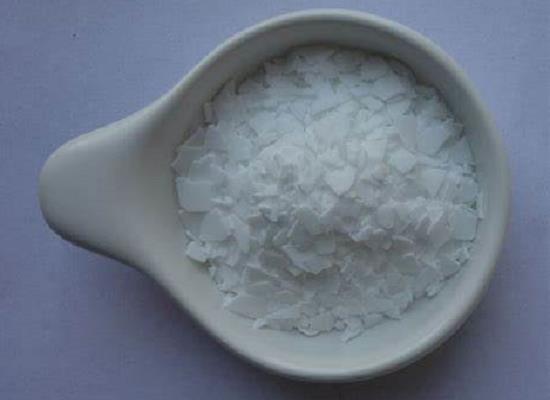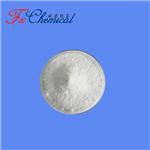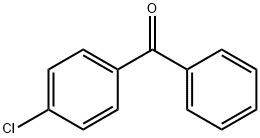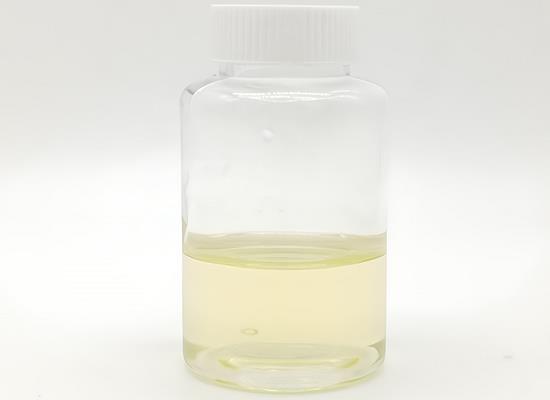4-Chlorobenzophenone: Biochemistry, Applications and Analytical Methods
General Description
4-Chlorobenzophenone plays a significant role in both biochemical pathways and pharmaceutical applications. As a metabolite of clemastine, it is generated through enzymatic reactions such as O-dealkylation and undergoes further transformations. In pharmacology, it serves as a crucial intermediate in synthesizing antihistamines, aiding in the development of allergy-relief compounds. Additionally, 4-Chlorobenzophenone's relevance extends to industrial manufacturing, where it is produced via reactions involving 4-chlorobenzoyl chloride. Analytical methods like high-performance liquid chromatography (HPLC) with UV detection are vital for ensuring its quality and efficacy in formulations, reinforcing its importance in the pharmaceutical and industrial sectors.

Figure 1. 4-Chlorobenzophenone
Biochemistry
Biochemical Pathways
4-Chlorobenzophenone, a derivative in the metabolism of clemastine, plays a significant role in various biochemical pathways. After administration, the metabolism of clemastine involves several enzymatic reactions, leading to the formation of various metabolites, including 4-chlorobenzophenone. This compound is specifically generated during the O-dealkylation process, which involves fission of the ether bond. Once generated, 4-chlorobenzophenone undergoes extensive metabolic transformations, including aromatic hydroxylation and aliphatic oxidation. The pathways highlight the significant presence and persistence of 4-chlorobenzophenone in biological samples post metabolism. 1
Excretion Mechanisms
The excretion of metabolites derived from 4-chlorobenzophenone is also notable. After metabolic processing, various metabolites are present in urine, where 4-chlorobenzophenone is identified among them. As detailed in pharmacological studies, 35% of excreted metabolites consist of the major metabolite carbinol, while 4-chlorobenzophenone is categorized as one of the significant metabolites along with others like M1 and M2. This metabolism and subsequent excretion of 4-chlorobenzophenone demonstrate the compound's relevance in pharmacology and biochemistry, providing insights into its potential effects and persistence in the human body. Understanding these processes is crucial for evaluating the safety and efficacy of drugs containing such compounds. 1
Applications
Applications in Pharmaceuticals
4-Chlorobenzophenone serves as a crucial intermediate in pharmaceutical synthesis, particularly in the manufacturing of antihistamines. Its unique chemical structure allows it to function effectively in the transformation processes required to develop various antihistamine products. By acting as a building block, 4-Chlorobenzophenone facilitates the development of compounds that alleviate allergic reactions, underscoring its significance in the pharmaceutical industry. The versatile nature of 4-Chlorobenzophenone also makes it applicable in the production of various transformation products, enhancing its importance as a synthetic intermediate. 2
Industrial Uses and Manufacturing
In addition to its applications in pharmaceuticals, 4-Chlorobenzophenone is widely utilized in various industrial settings. The most common method of manufacturing this compound involves the reaction of 4-chlorobenzoyl chloride with benzene in the presence of aluminum chloride as a catalyst. This process highlights the efficiency of 4-Chlorobenzophenone in chemical manufacturing, contributing to its steady availability in the market. Given its active status in the EPA TSCA Commercial Activity listing, 4-Chlorobenzophenone continues to be a vital substance in the production of chemical intermediates and specialty chemicals, showcasing its broad relevance in both pharmaceuticals and industrial applications. 2
Analytical Methods
Analytical Techniques for 4-Chlorobenzophenone
Analyzing 4-Chlorobenzophenone in pharmaceutical preparations, particularly in injection solutions, is essential for quality control and regulatory compliance. One of the most effective analytical methods employed is high-performance liquid chromatography (HPLC) with ultraviolet (UV) detection at a wavelength of 257 nm. This technique enables the precise quantification of 4-Chlorobenzophenone, ensuring that products meet required specifications. The HPLC method is favored for its sensitivity and ability to separate 4-Chlorobenzophenone from other components in complex matrices, contributing to the overall reliability of pharmaceutical formulations.
Importance of Analytical Methods
The analytical method used for detecting 4-Chlorobenzophenone not only ensures the integrity of the product but also aids in the development of new formulations involving this chemical compound. By utilizing HPLC with UV detection, manufacturers can track the stability and efficacy of 4-Chlorobenzophenone throughout the production process. This rigorous analytical approach is crucial for maintaining the standards of pharmaceutical products containing 4-Chlorobenzophenone, thereby fostering trust among consumers and regulatory agencies alike. As the demand for this compound continues to grow, robust analytical methods will play a pivotal role in its development and application across various industries. 3
References:
[1] MAN HO CHOI B C C Byung Hwa Jung. Identification of Urinary Metabolites of Clemastine after Oral Administration to Man[J]. Journal of Pharmacy and Pharmacology, 2010, 51 1: 1-103. DOI:10.1211/0022357991772097.[2] LUNN G, SCHMUFF N. HPLC Methods for Pharmaceutical Analysis[C]. 1900. DOI:10.1080/10739149808001911.
Lastest Price from 4-Chlorobenzophenone manufacturers

US $0.00/KG2025-04-21
- CAS:
- 134-85-0
- Min. Order:
- 1KG
- Purity:
- 98%min
- Supply Ability:
- 30tons/month

US $10.00/KG2025-04-21
- CAS:
- 134-85-0
- Min. Order:
- 1KG
- Purity:
- 99%
- Supply Ability:
- 10 mt


